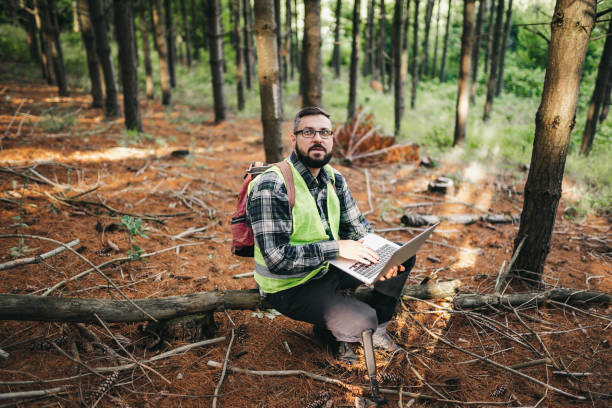
Sustainable forest management is a process for ensuring that the benefits of forests continue to be available for future generations and that the ecological, social and economic values of forests are sustained. Sustainable forest management is essential for conserving biodiversity, preventing soil erosion and watershed decline and managing competing demands from human activities. The process has been adopted by many countries around the world as they seek to balance economic growth with environmental sustainability through various frameworks such as social certification schemes (e.g., FSC), voluntary guidelines on sustainable forest management (e.g., PEFC) and legal regulations (e.g., EU Timber Regulation).
Brief overview of sustainable forest management
Sustainable forest management is the practice of managing forests for long-term ecological, economic and social benefits. It involves planning for future needs, recognizing the value of diverse resources, using renewable resources efficiently, protecting and restoring ecosystems and using appropriate technology.
The goals are:
- To ensure that forests continue to provide goods and services (such as wood) in perpetuity;
- To manage forest lands so as to maintain or enhance their capacity to provide these goods;
- To preserve biodiversity within managed areas;
- To maintain or improve landscape health while providing economic opportunities for rural communities
Definition and characteristics of forestry logging loans
A forestry logging loan is a short-term loan used to finance logging operations. The duration of these loans is usually one to two years, with some extending to three years. They are usually unsecured and have high interest rates; however, they can be secured if the borrower secured collateral such as timber licenses or land titles.
Logging loans provide funds for forest owners or companies who want to conduct logging activities on their property but do not have enough capital available at any given time due to other financial commitments such as paying off previous loans, paying salaries or taxes etcetera .
The Role of Forestry Logging Loans in Sustainable Forest Management
Sustainable forest management is the process of renewing the health and productivity of forests, while ensuring that resources are used in a way that does not compromise future generations. It’s important because it ensures sustainable use of our natural resources for both humans and wildlife alike.
Sustainable forestry practices include:
- Minimizing negative impacts on wildlife populations, habitats, and watersheds through careful planning and management decisions;
- Minimizing erosion caused by logging activities while maximizing soil productivity through proper site preparation techniques;
- Using advanced equipment that reduces fuel consumption while increasing safety standards (e.g. https://www.gofundshop.com/business-advance/);
Loan repayment challenges due to market fluctuations
The impact of market fluctuations on loan repayment is an important consideration for sustainable forest management. An example of this was the 2015 oil price crash, which caused many companies to be unable to repay their loans and resulted in significant losses for banks and other lenders.
Collaborative approaches involving governments, NGOs, and businesses
Collaborative approaches involving governments, NGOs, and businesses have been shown to be effective in sustainable forest management. Through collaboration, partners can share their knowledge and expertise, which can help them achieve common goals.
The benefits of collaboration are many:
- It creates a more positive relationship between the different parties involved in sustainable forestry practices; this leads to greater transparency and trust between them – two essential elements for successful partnerships!
- Collaboration allows for greater understanding of each other’s roles within the sector (e.g., government agencies may not fully understand what types of projects are needed by local communities). This knowledge helps create better solutions for everyone involved because everyone has an equal say over what should happen next so long as it aligns with their interests/goals etc…
Emphasis on the pivotal role of forestry logging loans in sustainable forest management
Sustainable forest management is a crucial component of any country’s environmental protection efforts. It ensures that we protect our forests and the animals that live in them, while also ensuring that we have enough wood to meet society’s needs.
In order to achieve this, sustainable forestry practices must be implemented across all sectors of the industry: from harvesting trees to transporting them for processing and manufacturing into products such as furniture or paper products. In addition to this, it’s important for governments to put policies in place which support sustainable forest management practices by offering incentives such as tax breaks or subsidies on machinery purchases so they can be implemented more easily by businesses large and small alike – especially those located far away from major cities where there may not be much access at all!
Finally (and perhaps most importantly), we need YOU! If you’re interested in helping out with some volunteer work but aren’t sure where exactly would be best suited then please contact us here at [email protected] and let us know what kind of experience level(s) you would like for them too 🙂
Conclusion
In conclusion, the role of forestry logging loans in sustainable forest management is an important one. These loans can help small-scale farmers and other forest owners to improve their livelihoods while protecting the environment. However, there are still many challenges that need to be overcome before this becomes a reality for everyone involved.


































